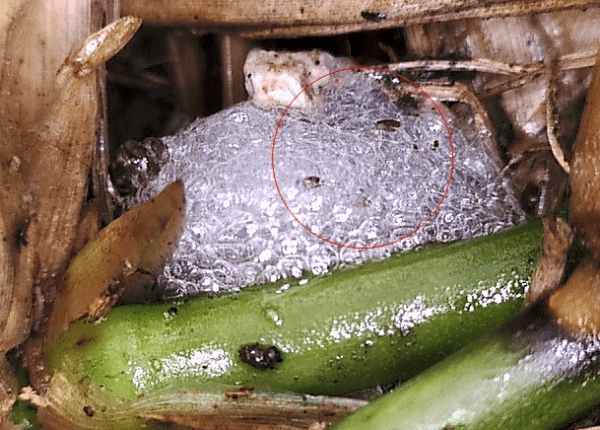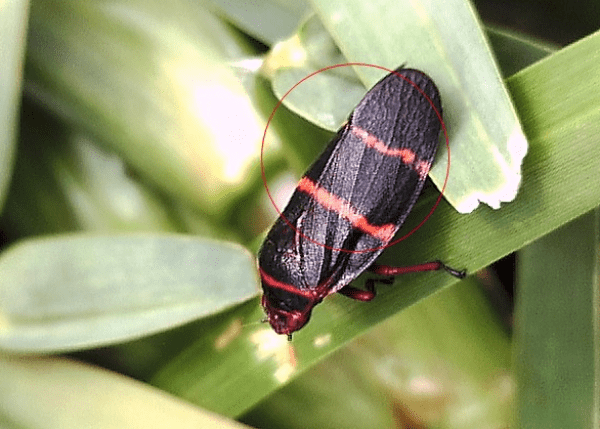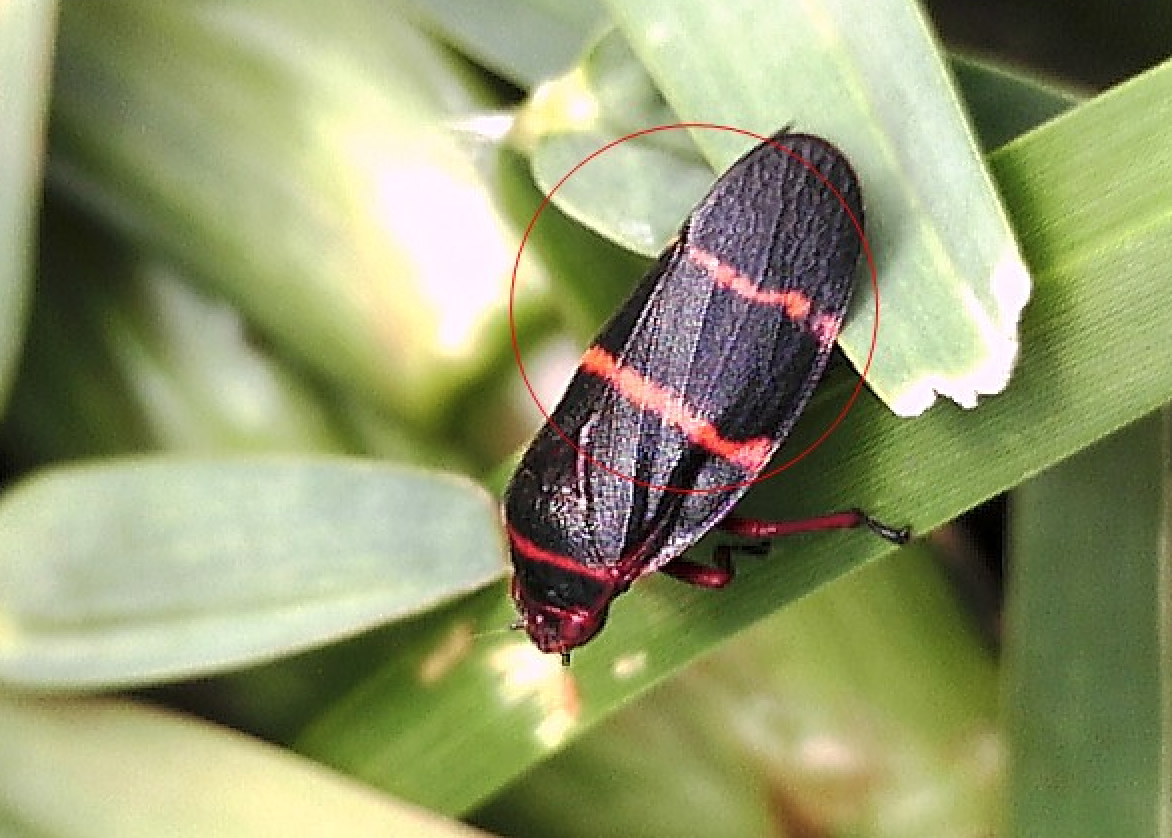Lawn & Garden


Spittle mass created by spittlebug nymphs on St. Augustine grass.
Two-lined spittlebugs are a common occurrence and problem in many Southern lawns. Adults forms of these insects are easily identifiable because of their black and red bodies and the two red to orange parallel lines across their wings. Nymphs are much harder to find because of their pale-yellow coloration and location within the turf canopy. However, the spittle they create can be seen easily in infested turfgrasses during the spring and summer.
Infestation levels can get rather high in areas that receive frequent rainfall during warm months. Spittlebugs prefer centipedegrass, hollies, aster, and morning glories, causing feeding injury with their piercing and sucking mouthparts. In turfgrasses like centipedegrass and St. Augustinegrass, this feeding can cause a purple to brown streaking to occur on the grass blades. Heavy feeding by adults and nymphs can cause grass to exhibit symptoms that are similar to drought stress, such as yellowing, browning, and plant death.
Life Cycle
Spittlebug eggs hatch during the spring and summer, with the first generation of adults reaching peak activity during June with another peak later in the summer. The life cycle from egg to adult can take as little as 50 days to complete and mature females can lay up to 40 eggs during their lifetime. Small orange eggs are typically laid near the soil or in thatch. It is in these eggs that the two-lined spittlebug overwinters. During spring, hatching occurs and the nymphs begin to move to host plants to feed. After only five minutes of active feeding, these pale-yellow nymphs will begin to excrete a white-frothy spittle from which they get their name. The spittle helps protect these young insects from desiccation and predation. Depending on the temperature, the nymph stage can last around 30 days in warmer areas and up to 60 days in cooler areas. Once in the adult stage, these insects can easily be observed feeding on turf as they hop when threatened and fly from location to location. During warm months, each adult can survive on a lawn for as long as 42 days.
Management Strategies

Two-lined spittlebug adult on St. Augustine grass.
Centipedegrass is one of the most susceptible grasses to two-lined spittlebug damage. However, they also feed on bermudagrass, St. Augustine, bahiagrass, and zyosia. Proper cultural practices are the first line of defense against the two-lined spittlebug. Keeping a healthy lawn by watering, mowing, and fertilizing appropriately can reduce the impacts of spittlebug damage. Dethatching infested areas and topdressing with sand can help reduce the habitat available to these insects.
If populations become large, a chemical treatment may be warranted. Apply approved insecticides in the early evening after mowing and watering the turf to increase the effectiveness of the application. Always follow the instructions on the label before applying insecticides and wear recommended protective equipment. Keep pets and children off the turf area until the re-entry interval (REI) allows access.

